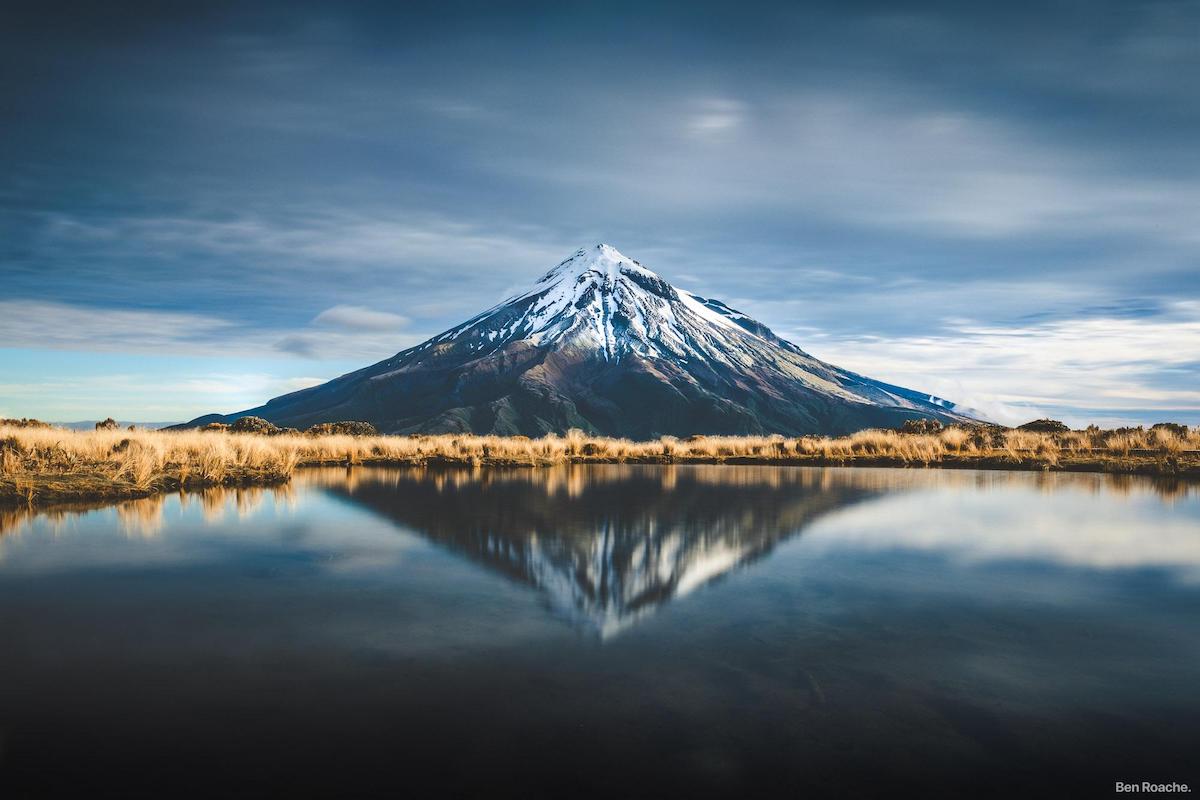Mount Taranaki, nestled within Egmont National Park on New Zealand’s North Island, is a natural beauty, adventure, and cultural heritage treasure trove. As one of the country’s oldest national parks, it is a landmark destination that captivates visitors with its striking volcanic peak, pristine forests, and diverse outdoor activities.
Easy Access and Scenic Routes
Getting to Taranaki is straightforward, with direct flights from Auckland, Wellington, or Nelson. For those who prefer road trips, the park is about a five-hour drive from Auckland or Wellington. The drive from Auckland, in particular, is a feast for the eyes, taking you through Waitomo, famous for its enchanting Waitomo Caves. These caves, adorned with glowworms, offer an unforgettable subterranean experience that pairs beautifully with the above-ground wonders of Taranaki.
A Geological Marvel
Egmont National Park is not just about stunning scenery—it is also a site of fascinating geological significance. The park’s most prominent feature, Mount Taranaki, is a dormant stratovolcano with a nearly perfect cone shape, often compared to Japan’s Mount Fuji. Surrounding the mountain are vast lahars—mudflows caused by past volcanic activity—that have left deposits as thick as nine kilometres. These unique formations are not just natural wonders; they carry cultural importance as well. Māori historically utilised the mound-like lahars as fortified pā sites (villages), blending natural terrain with strategic ingenuity.
Adventure and Outdoor Activities
Nature enthusiasts and adventure seekers will find plenty to do at Mount Taranaki. The mountain itself offers a range of hiking trails suitable for all fitness levels, from leisurely walks through lush rainforests to challenging summit climbs for experienced hikers. One of the most popular trails is the Pouakai Circuit, which provides panoramic views of the mountain reflected in the famous Pouakai Tarn. For those seeking less strenuous activities, the Dawson Falls area features short, family-friendly walks and the historic Dawson Falls Power Station, one of the oldest in New Zealand.
In winter, Taranaki transforms into a hub for snow sports. The Manganui Ski Area, situated on the mountain’s slopes, offers skiing and snowboarding opportunities with breathtaking alpine views. Throughout the year, visitors can also enjoy mountain biking, birdwatching, and photography, as the park’s diverse landscapes provide countless stunning backdrops.
Cultural and Historical Significance
Beyond its natural beauty, Mount Taranaki holds deep cultural significance. In Māori mythology, the mountain is said to be a revered ancestor and a spiritual entity. The local iwi (tribe) regard it as sacred, and its stories are interwoven with those of other volcanic landmarks on the North Island, such as Tongariro. Visitors are encouraged to respect the mountain and its surrounding areas, keeping in mind its cultural importance.
The region also boasts a rich colonial history, evident in landmarks like Puke Ariki, a museum and library in nearby New Plymouth that showcases Taranaki’s past, from its Māori heritage to European settlement.
A Year-Round Destination
No matter the season, Taranaki offers something for every traveller. Summer brings clear skies perfect for hiking and sightseeing, while winter offers snow-capped beauty and skiing adventures. Spring and autumn, with their mild temperatures, are ideal for exploring the park’s lush trails and waterfalls.
Mount Taranaki and Egmont National Park are more than just a destination; they are an experience of connection—connection to nature, to history, and to the spirit of Aotearoa New Zealand. Whether you’re hiking to the summit, marvelling at the geological wonders, or learning about its cultural significance, a visit to this iconic region will leave you inspired and rejuvenated.
Plan Your Visit
Mount Taranaki is ready to welcome you with open arms. Whether you’re planning a weekend escape or an extended stay, this incredible destination offers the perfect blend of adventure, culture, and relaxation. Add Mount Taranaki to your travel itinerary today and discover why it’s one of New Zealand’s most cherished natural landmarks.










